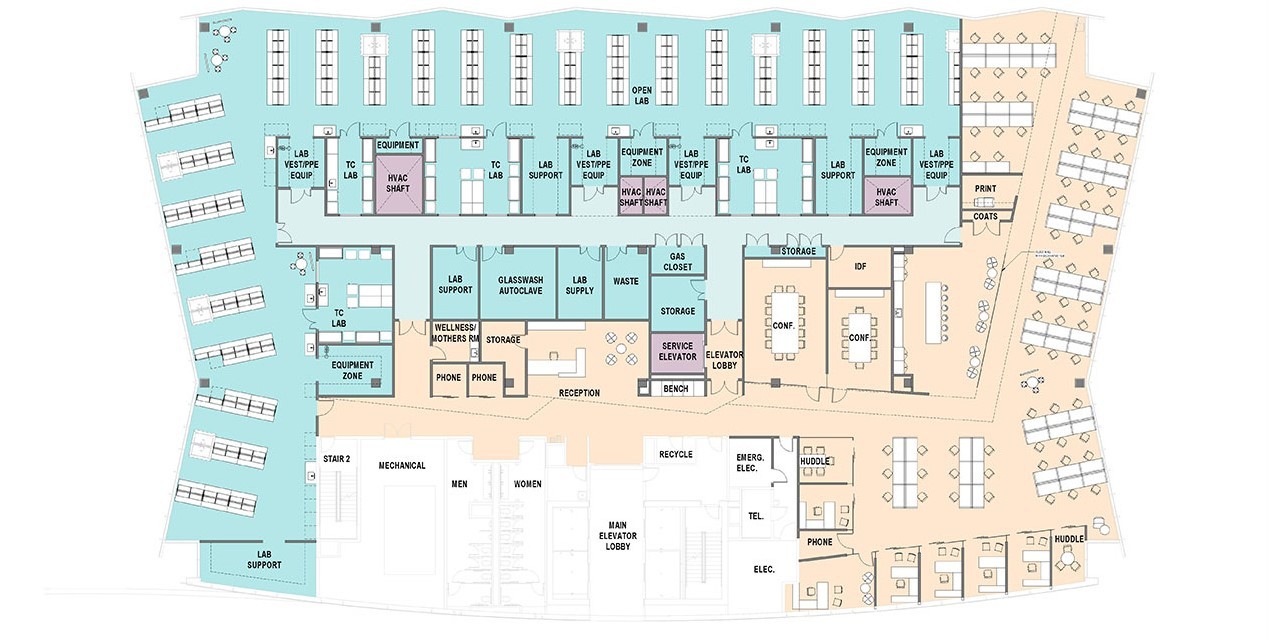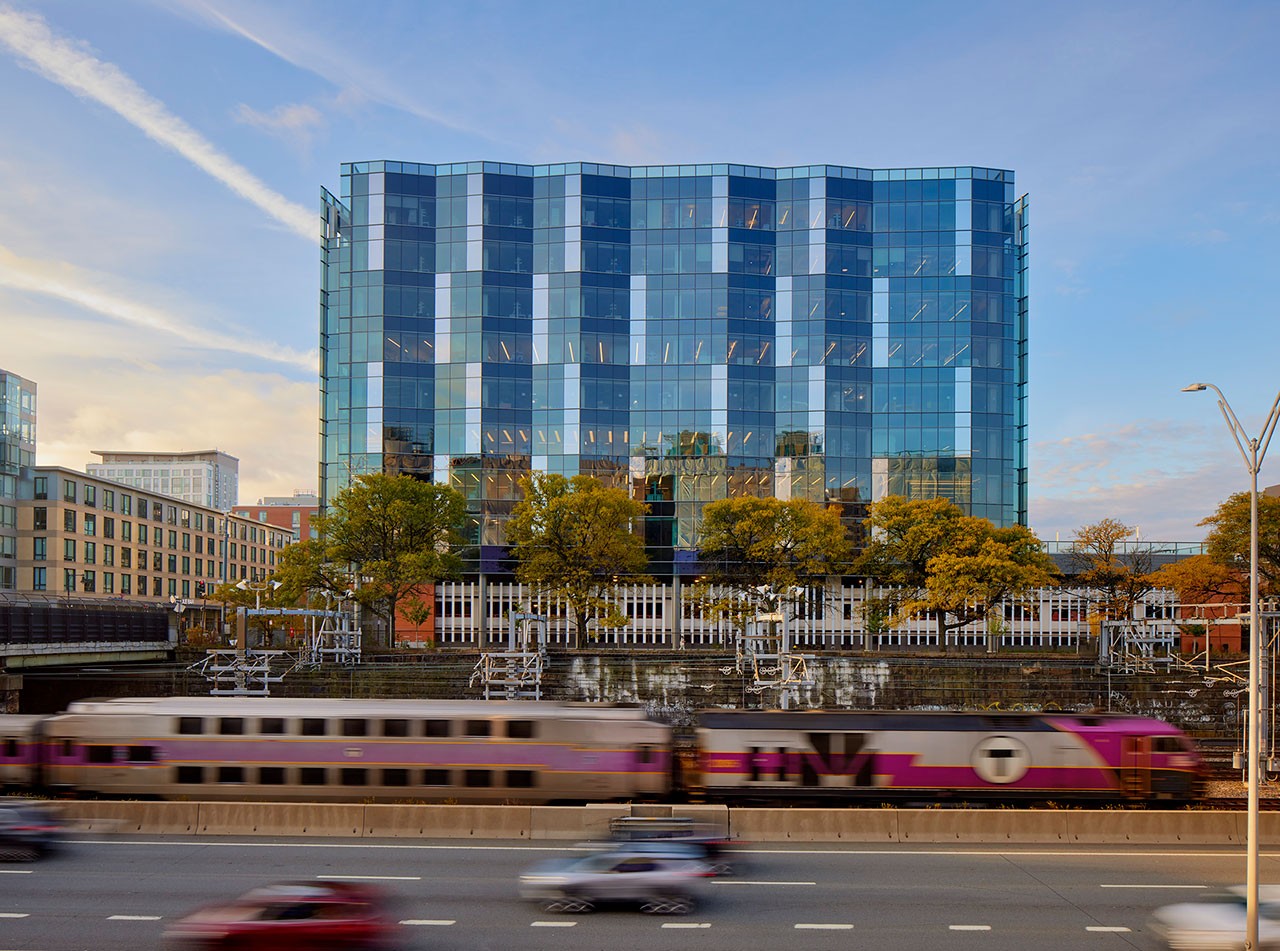The mid-block lobby provides a street-level connector space from Harrison Avenue to Washington Street. Informed by the BPDA’s Harrison-Albany Corridor Strategic Plan, the design carves a two-story lobby space directly between the existing office building at 1000 Washington and the new tower.
Upward Momentum in Boston's South End
Located in the heart of Boston’s historic South End, 321 Harrison Avenue offers eight stories of lab, office, and ground-level retail space atop an existing three-level parking garage.
The new building contributes to the upward trend in development in South End’s newest neighborhood, affectionately named “Ink Block.”
With the core-and-shell and retail completed and several SMMA-designed labs already in use, 321 Harrison has become home to some of Boston’s most enterprising life science and biotech companies.
321 Harrison evokes the rich cultural legacy of the South End. The neighborhood is known for its public spaces, architecture, and its relationship to the arts. 321 Harrison’s design activates the street level by creating a walkable urban experience, extending into its surroundings with a new streetscape and retail spaces.






